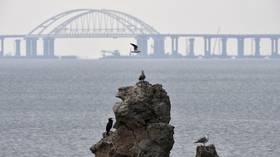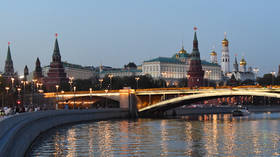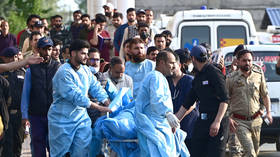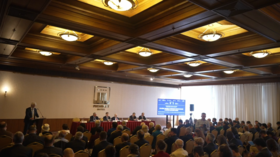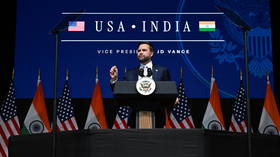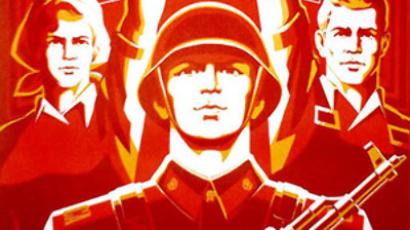The day when Russia made a U-turn on its way to West
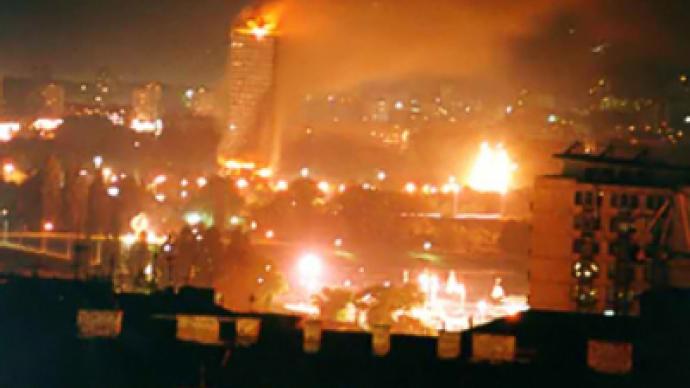
Ten years ago, on March 24 NATO’s bombing of Yugoslavia began. Achieving NATO’s main objective – withdrawal of Serb troops from Kosovo – took months, the tragic side-effect – alienation of Russia – happened imme
After centuries of warfare in Europe, the second half of the 20th century brought what seemed to be a long-awaited tranquility to the continent. When the Berlin Wall was dismantled in 1990, many thought a large-scale military action would never repeat itself in the heart of human civilisation forever.
They were wrong.
Right on the threshold of the new millennium on March 24, 1999, 7pm GMT armed military aircraft were once again in the European skies.
Ironically, for German Luftwaffe (air forces) bombings of the then Yugoslavia were the first actions since World War II.
Thirteen NATO members provided their aircraft for the operation called Allied Force: Belgium, Canada, Denmark, France, Germany, Italy, Netherlands, Norway, Portugal, Spain, Turkey, UK and the U.S.
Opposing this selection of the richest and most developed countries of the world was the lone Serbia (Montenegro – then part of Yugoslavia chose not to participate in the conflict and was left unharmed).
Outnumbered and outpowered
It took less than 24 hours to get a clear glimpse on the outcome of the “war” – though the usage of this term is arguable, in regard to an operation led by more than 1,000 aircraft against a country subject to a UN arms embargo and using only 14 MiG-29 designed back in the 1970s to protect itself.
The word “battering” is probably more suited to describe what happened in the spring of 1999.
During the very first day NATO forces hit some 53 air-defence targets, leaving the former Yugoslavia stark naked before their future attacks.
And then it went on from military targets – airfields, command and control sites, barracks, headquarters (particularly that of the special police) – to infrastructure: oil refineries, energy storages, power plants, bridges, railway junctions, TV facilities and rebroadcasting transmitters were deliberately destroyed en masse.
Numerous homes, refugee convoys, a bus, train and a hospital were hit by stray bombs.
“My house in Belgrade is in the very centre. Some 150 metres away in one direction was the heavily bombed headquarters of the Yugoslav Army. Just as far in another direction, the TV broadcasting centre was also bombed. The tallest building in the city, 101-metre-long BeograÄ‘anka, situated right next to us also had a TV facility and, thus, was also a potential target, so we spent days expecting it to crumble right on our heads,” Serbia’s Ambassador in Moscow Jelica Kurjak recalled, speaking at a talk show in Moscow.
Many other Serbs, confess that the sound of air-raid alerts still haunt them at nights.
“My first question was: ‘Is this some sort of a drill?’ My sister calmly responded: ‘No, otherwise we’d hear an announcement on TV. The war is here.’ We just sat in the living room, looking at each other. Now what? Should we go somewhere? Where could that be? Some sort of bunker? In the end we stayed in the living-room till the morning,” Masha Jerenic, a Belgrade native recalls.
No whipping boys
Despite being in no position to comprehend the enemy, let alone combat it, Serbia was in no rush to give up. A month of bombings was obviously not enough to overcome the notorious Serbian stubbornness that had survived five centuries of Turkish occupation.
An inventive Serb anti-aircraft missile battery commander managed to hand the U.S. Air Force one of its most spectacular losses. Tweaking an old Soviet surface-to-air missile he became the first soldier to shoot down an F-117 stealth fighter.
At a Washington conference on April 23 that year, NATO decided to up the tempo. Shifting from an 8-hour schedule of bombings to a 24-hour one NATO forces now aimed to hamper the supplies of the then Yugoslav Army that was stationed in Kosovo to protect the country’s territorial integrity.
Long-range cruise missiles were fired from the U.S. and UK fleets in the Adriatic sea.
Serbia claims to have evidence of the usage of cluster bombs, graphite bombs and depleted uranium, which contradicts international law on the use of radioactive weapons. According to Kurjak, there has been a surge of cancer in the southern areas near the towns of Nis and Leskovac, where uranium was used. AFP quotes unnamed European non-governmental groups, that say handling the depleted uranium arms for NATO caused the death of “dozens of Italian soldiers”. Dr. Jasmina Vujic from the Department of Nuclear Engineering at Berkeley University of California told RT that uranium can still be found in the areas of the attacks.
Eventually NATO bombings – called in official statements a “humanitarian intervention” – managed to disrupt the then Yugoslav infrastructure to a level that the country’s leadership had little choice, but to withdraw from Kosovo.
The bombings also claimed the lives of 489-1,200 civilians, according to various estimates (the smallest figures are from the U.S.-based Human Rights, while the larger ones are from the ex-Yugoslav authorities).
Lost causes of “war”, literally
NATO’s ultimate goal was evident even back then, and today it is a fact: to build a platform for the future unilateral independence of Kosovo.
However, at the time their main demands were for Serbs to withdraw their forces from Kosovo, leave the region under international military control and a political framework for solving the Kosovo problem to be established. The latter had to be based on Rambouillet Accords, which Serbia hadn't endorsed.
The main area of controversy was the international body that was to take control of Kosovo. While Serbia and Russia insisted that it should be the UN; Albania, the U.S. and UK chose NATO.
An experienced U.S. politician, ex-Secretary of State Henry Kissinger had this comment about the accords:
“The Rambouillet text, which called on Serbia to admit NATO troops throughout Yugoslavia, was a provocation, an excuse to start bombing. Rambouillet is not a document that an angelic Serb could have accepted. It was a terrible diplomatic document that should never have been presented in that form”.
Another event that was named as a pretext for the bombings was the RaÄÂak massacre – an alleged brutal killing of 40-45 Albanians in a Kosovan village. Though people were found guilty and sentenced for the incident, we have to consider it alleged, due to gross discrepancies in the investigation.
First of all, William Walker – a U.S. head of a local peacekeeping mission at the time – testified to having seen the bodies, but not the killing or the killers. Also Walker, who subsequently became an honorary citizen of Albania, made phone calls to senior U.S. statesmen saying he had discovered a justification for a NATO war. Its believed he forgot about these calls during his testimony.
In February 2002, the German ARD broadcast a controversial documentary which accused the then German defence minister of manipulating facts about the RaÄÂak killings in order to gain support from the public and parliament for Germany’s involvement in the “war”.
While he was Russia’s representative at the UN Security Counsel, current Foreign Minister Sergey Lavrov had on many occasions demanded to see the final report on the RaÄÂak killings made by Finnish forensics. After being refused it for various reasons, he was finally told by the prosecutor of the International Criminal Tribunal for the former Yugoslavia Carla del Ponte that the report was lost.
And finally – in October 2008 the Finnish pathologist who had conducted the above report, stated that she had been pressured both by the Finnish Ministry of Foreign Affairs, and by Walker to modify its contents, in order to make more explicit the role of Serb troops in the incident. She refused to do so.
Losing Russia
While for Serbia March 24 was a day of defeat, for Russia it became a day of disillusionment with the West and made a U-turn from it: both figuratively and literally.
Evgeny Primakov – the Russian Prime-Minister at the time and, due to the precarious health condition of Boris Yeltsin, the main figure of Russia’s politics – was on his way to Washington, when the bombings began. Primakov went to hold talks with his U.S. counterpart Albert Gore about a $5 billion IMF credit for Russia, and various deals worth another $10 billion.
The talks never happened, because Primakov took a sweep halfway through, neglecting the $15 billion potential loss.
Before that day Russia was a typical post-socialist transition economy firmly committed to becoming an open market.
Back then Russia had humbly accepted its role as a Monopoly player, who entered the game some 70 laps late. After March 24 the Monopoly gradually started turning into Risk.
On June 12, immediately after a ceasefire was reached, Russian spetsnaz took Kosovo’s Slatina airport, leaving British NATO forces bemused as they became the first peacekeepers in the region.
A bold decision to singlehandedly turn a NATO peacekeeping operation into a UN one, by just going there and assuming control, could’ve become the first act of World War III there and then. But it was an adequate reaction to NATO’s intentions to shape the geopolitical map the way it wanted.
Ten years on, Russia is still committed to finding a peaceful solution within the UN framework. Essentially we are talking about one that doesn’t involve breaching Serbia’s territorial integrity.
Ruben Zarbabyan, RT



